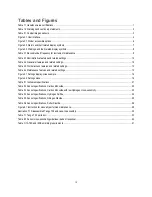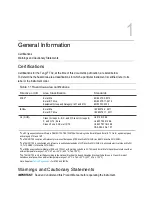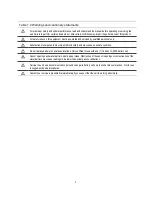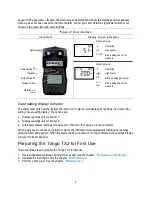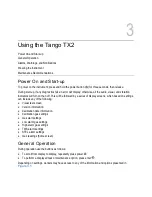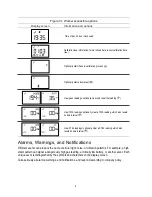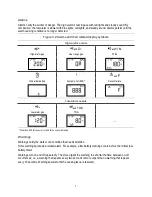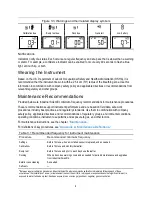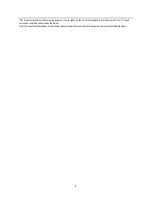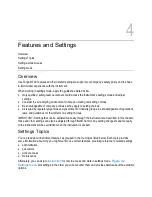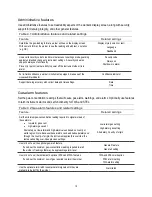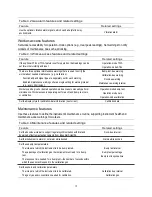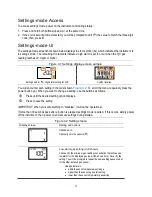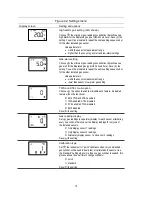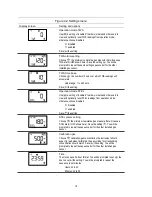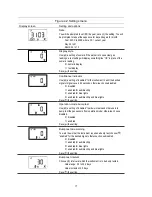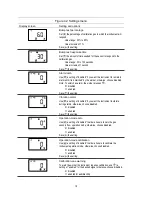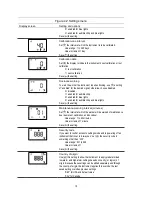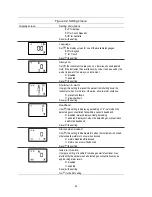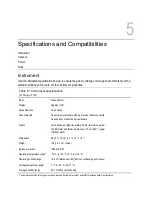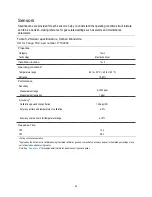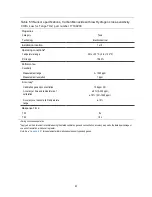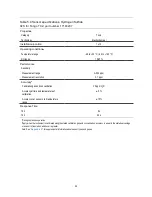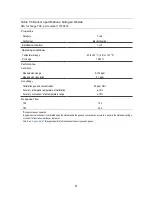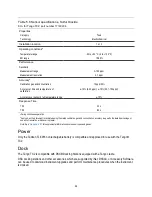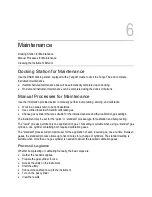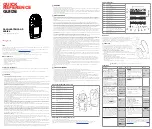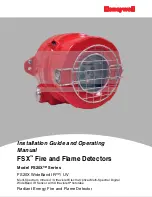
13
Table 4.2 Gas-alarm features and related settings
Feature
Related settings
Use the optional vibration alarm signals, which can be helpful in noisy
environments.
Vibration alarm
Worker-access features
Set worker accessibility for operation-mode options (e.g., clear peak readings). Set warnings to notify
workers of maintenance due such as docking.
Table 4.3 Worker-access features and related settings
Feature
Related settings
If the optional STEL or TWA feature is set for operation, their readings can be
set for worker visibility and reset.
Operation-mode TWA
Operation-mode STEL
There are three optional maintenance warnings that are used to notify the
worker about needed maintenance (e.g., calibration).
Functionality and signal type are separately set for
each
warning.
Enabled maintenance warnings share a single setting for warning interval
(e.g., every 30 minutes).
Bump-test-due warning
Calibration-due warning
Dock-due warning
Maintenance warning interval
Workers can be given or denied operation-mode access to manually perform
maintenance. Worker access is separately set for each task: bump test, zero,
or calibration.
Operation-mode bump test
Operation-mode zero
Operation-mode calibration
Set the display style for calibration-date information (next or last).
Calibration date
Maintenance features
Use these features to define the
instrument’s maintenance routine
, supporting instrument health and
maintenance-due warnings for workers.
Table 4.4 Maintenance features and related settings
Feature
Related settings
Set the dock-due interval to support regular synchronization with iNet and
download of instrument enhancements from Industrial Scientific.
Dock-due interval
Set the instrument to alarm or not alarm while docked.
Alarms while docked
Set these bump test parameters:
The
interval
at which the instrument is to be bump tested.
The
percentage
of calibration gas the instrument must read for a bump
test.
The
response time
needed for a bump test
—
the number of seconds within
which the sensor will respond to the calibration gas.
Bump test interval
Bump test percentage
Bump test response time
Set these zero and calibration parameters:
The
interval
at which the instrument is to be calibrated.
The gas
type
and
concentration
needed for calibration.
Calibration due interval
Calibration gas
Summary of Contents for TANGO TX2
Page 6: ......
Page 16: ......
Page 38: ...32 Illustration 7 1 Disassembled Tango TX2 and case top assembly Instrument Case top assembly...

